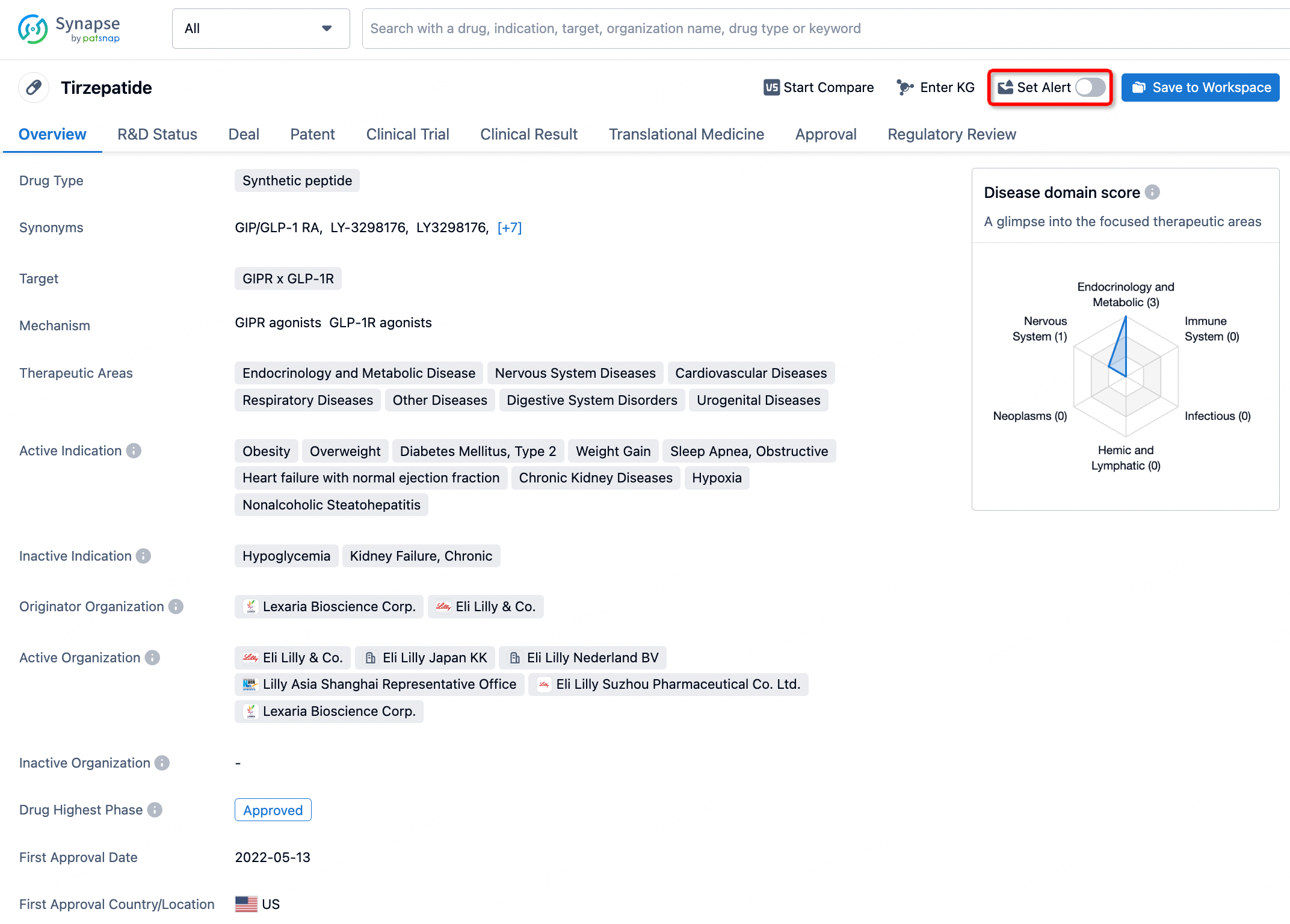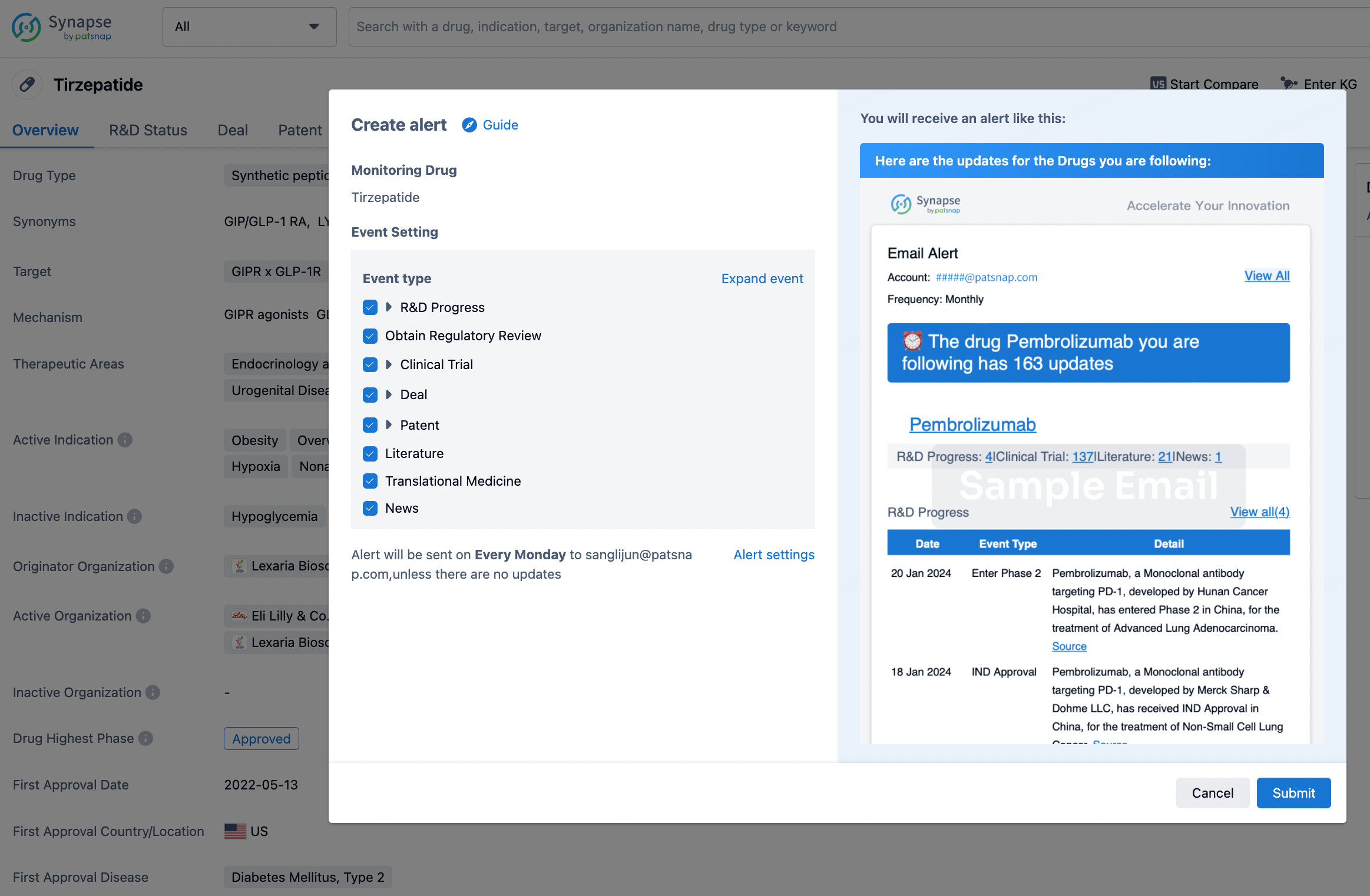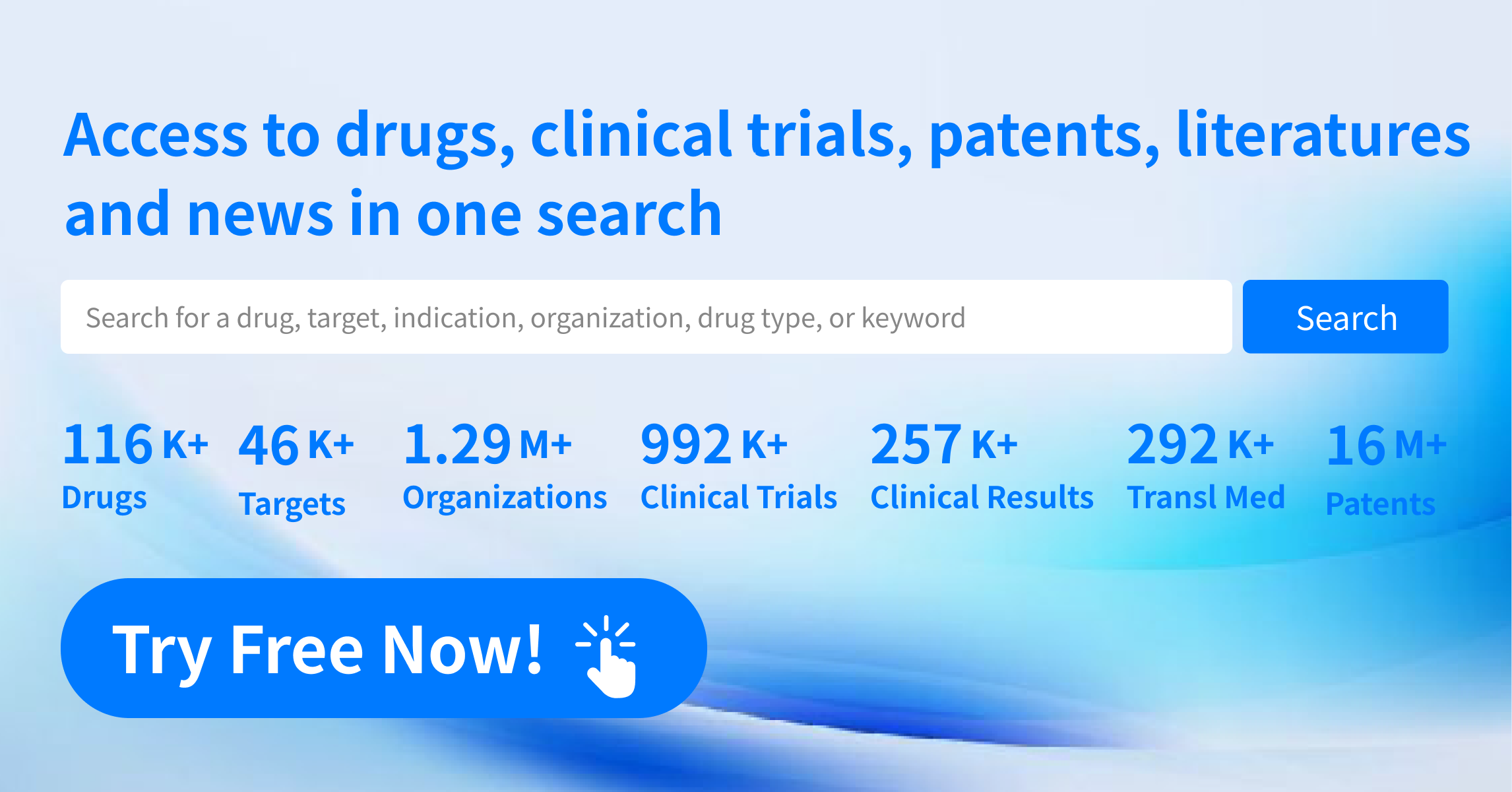Request Demo
What is Epoprostenol Sodium used for?
14 June 2024
Epoprostenol sodium is a potent medication used primarily for the treatment of severe pulmonary arterial hypertension (PAH). Known under trade names such as Flolan and Veletri, it acts as a potent vasodilator and inhibitor of platelet aggregation. The drug is a synthetic version of prostacyclin (PGI2), a naturally occurring molecule in the body. Initially developed by researchers at GlaxoSmithKline and approved by the FDA, epoprostenol sodium has become a cornerstone in PAH treatment due to its life-extending benefits. PAH is a condition characterized by high blood pressure in the arteries that supply the lungs, often leading to heart failure if untreated. The drug's development has undergone rigorous clinical trials demonstrating its efficacy in improving symptoms, exercise capacity, and overall survival rates in PAH patients.
Epoprostenol sodium's mechanism of action is rooted in its ability to mimic the effects of endogenous prostacyclin. Prostacyclin is a member of the prostanoid family of lipid compounds, which play critical roles in various physiological processes. Epoprostenol binds to prostacyclin receptors on the surface of vascular endothelial cells and smooth muscle cells. This interaction activates adenylate cyclase, an enzyme that increases the levels of cyclic adenosine monophosphate (cAMP) within the cells. Elevated cAMP levels lead to the relaxation of smooth muscle cells, resulting in vasodilation and improved blood flow. Additionally, cAMP inhibits platelet aggregation, reducing the risk of thrombotic events in the pulmonary arteries. This dual action makes epoprostenol highly effective in alleviating the symptoms of PAH and improving oxygenation and cardiac output.
Epoprostenol sodium is typically administered via continuous intravenous infusion due to its very short half-life, generally around 3-6 minutes. The drug is delivered using a portable infusion pump, allowing patients some mobility. The infusion route ensures that a steady concentration of the drug is maintained in the bloodstream, given its rapid degradation. In a hospital setting, epoprostenol sodium is often initiated under close medical supervision to monitor for potential side effects and to titrate the dosage appropriately. The onset of action is relatively quick, often within minutes of administration, making it highly effective for acute symptomatic relief. However, due to its short half-life, interruptions in the infusion can lead to a rapid return of symptoms and are considered a medical emergency.
As with any potent medication, epoprostenol sodium is not without its side effects and contraindications. Common side effects include flushing, headache, jaw pain, nausea, and diarrhea. These side effects are typically dose-dependent and can often be managed by adjusting the dosage. More serious side effects may involve hypotension, bleeding complications, and catheter-related infections due to the continuous intravenous infusion requirement. Contraindications for epoprostenol use include hypersensitivity to the drug or any of its components. It is also contraindicated in patients with severe heart failure due to the risk of pulmonary edema. Close monitoring by healthcare providers is essential to manage these risks effectively.
Drug interactions are another crucial consideration when prescribing epoprostenol sodium. The medication can interact with various other drugs, potentially impacting its efficacy and safety profile. For instance, the use of anticoagulants or other platelet inhibitors, such as aspirin or clopidogrel, can increase the risk of bleeding when used concomitantly with epoprostenol. Additionally, drugs that lower blood pressure, including beta-blockers and diuretics, may enhance the hypotensive effects of epoprostenol, necessitating close monitoring and possible dose adjustments. It's essential for healthcare providers to review a patient's entire medication regimen to identify and manage potential interactions effectively.
In summary, epoprostenol sodium has revolutionized the treatment of severe pulmonary arterial hypertension, offering substantial improvements in quality of life and survival rates for patients. Its mechanism of action, involving vasodilation and inhibition of platelet aggregation, addresses the core pathophysiological features of PAH. While the continuous intravenous infusion method presents challenges, it ensures that the drug remains effective in the bloodstream. As with all potent medications, careful management of side effects, contraindications, and drug interactions is essential for optimizing patient outcomes. As research continues, newer formulations and administration methods may further enhance the therapeutic potential of this life-saving drug.
Epoprostenol sodium's mechanism of action is rooted in its ability to mimic the effects of endogenous prostacyclin. Prostacyclin is a member of the prostanoid family of lipid compounds, which play critical roles in various physiological processes. Epoprostenol binds to prostacyclin receptors on the surface of vascular endothelial cells and smooth muscle cells. This interaction activates adenylate cyclase, an enzyme that increases the levels of cyclic adenosine monophosphate (cAMP) within the cells. Elevated cAMP levels lead to the relaxation of smooth muscle cells, resulting in vasodilation and improved blood flow. Additionally, cAMP inhibits platelet aggregation, reducing the risk of thrombotic events in the pulmonary arteries. This dual action makes epoprostenol highly effective in alleviating the symptoms of PAH and improving oxygenation and cardiac output.
Epoprostenol sodium is typically administered via continuous intravenous infusion due to its very short half-life, generally around 3-6 minutes. The drug is delivered using a portable infusion pump, allowing patients some mobility. The infusion route ensures that a steady concentration of the drug is maintained in the bloodstream, given its rapid degradation. In a hospital setting, epoprostenol sodium is often initiated under close medical supervision to monitor for potential side effects and to titrate the dosage appropriately. The onset of action is relatively quick, often within minutes of administration, making it highly effective for acute symptomatic relief. However, due to its short half-life, interruptions in the infusion can lead to a rapid return of symptoms and are considered a medical emergency.
As with any potent medication, epoprostenol sodium is not without its side effects and contraindications. Common side effects include flushing, headache, jaw pain, nausea, and diarrhea. These side effects are typically dose-dependent and can often be managed by adjusting the dosage. More serious side effects may involve hypotension, bleeding complications, and catheter-related infections due to the continuous intravenous infusion requirement. Contraindications for epoprostenol use include hypersensitivity to the drug or any of its components. It is also contraindicated in patients with severe heart failure due to the risk of pulmonary edema. Close monitoring by healthcare providers is essential to manage these risks effectively.
Drug interactions are another crucial consideration when prescribing epoprostenol sodium. The medication can interact with various other drugs, potentially impacting its efficacy and safety profile. For instance, the use of anticoagulants or other platelet inhibitors, such as aspirin or clopidogrel, can increase the risk of bleeding when used concomitantly with epoprostenol. Additionally, drugs that lower blood pressure, including beta-blockers and diuretics, may enhance the hypotensive effects of epoprostenol, necessitating close monitoring and possible dose adjustments. It's essential for healthcare providers to review a patient's entire medication regimen to identify and manage potential interactions effectively.
In summary, epoprostenol sodium has revolutionized the treatment of severe pulmonary arterial hypertension, offering substantial improvements in quality of life and survival rates for patients. Its mechanism of action, involving vasodilation and inhibition of platelet aggregation, addresses the core pathophysiological features of PAH. While the continuous intravenous infusion method presents challenges, it ensures that the drug remains effective in the bloodstream. As with all potent medications, careful management of side effects, contraindications, and drug interactions is essential for optimizing patient outcomes. As research continues, newer formulations and administration methods may further enhance the therapeutic potential of this life-saving drug.
How to obtain the latest development progress of all drugs?
In the Synapse database, you can stay updated on the latest research and development advances of all drugs. This service is accessible anytime and anywhere, with updates available daily or weekly. Use the "Set Alert" function to stay informed. Click on the image below to embark on a brand new journey of drug discovery!
AI Agents Built for Biopharma Breakthroughs
Accelerate discovery. Empower decisions. Transform outcomes.
Get started for free today!
Accelerate Strategic R&D decision making with Synapse, PatSnap’s AI-powered Connected Innovation Intelligence Platform Built for Life Sciences Professionals.
Start your data trial now!
Synapse data is also accessible to external entities via APIs or data packages. Empower better decisions with the latest in pharmaceutical intelligence.


